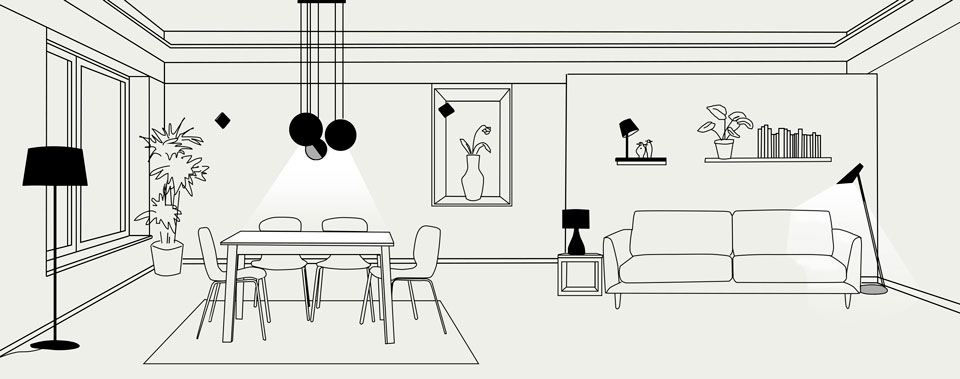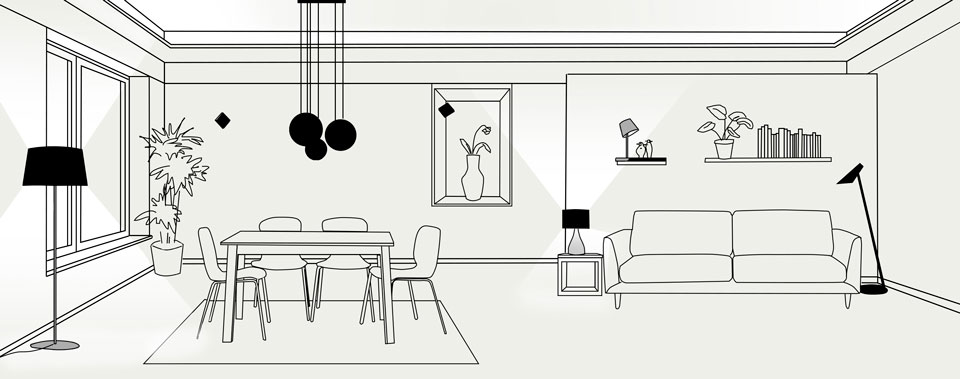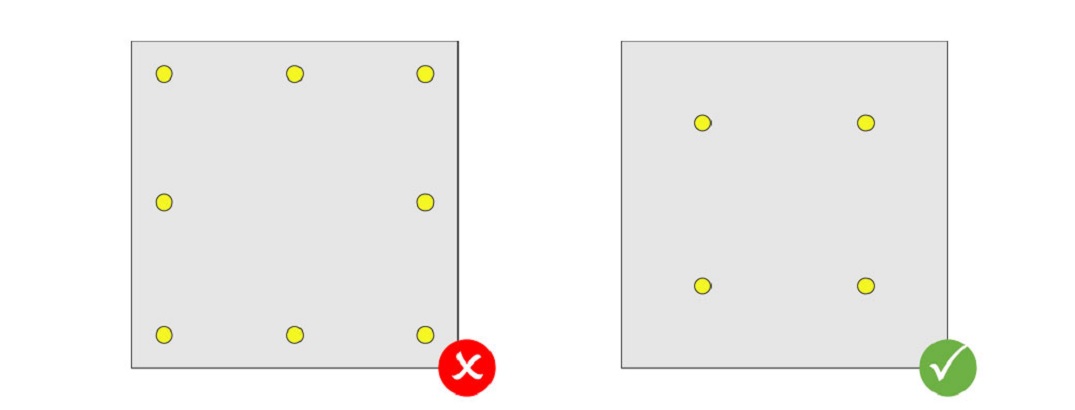Task lighting vs ambient lighting: What is the difference?
Task lighting is the operational lighting that provides the required brightness to help you complete
Task lighting is the operational lighting that provides the required brightness to help you complete daily tasks. Ambient lighting is indirect lighting that can be used to add softness and texture to accentuate certain features in a room. You’ll have more direction when planning your interiors if you understand what they do and how to get the most out of them. Let us see the main difference between task lighting and ambient lighting.
What is task lighting?

Image Source: vibia.com
It provides direct illumination that is suitable for detailed tasks such as reading and writing, grooming, and food preparation. It is brighter than ambient lighting and is concentrated on the specific area where the task is performed.
What is ambient lighting?

Image Source: vibia.com
Ambient lighting provides general illumination and is intended to create a homogeneous lighting level. It is the primary layer of lighting and sets the mood of a room. As a result, it’s usually soft or diffused, and it’s often dimmable to accommodate both day and night settings.
| Factors | Task lighting | Ambient lighting |
| Area | Light is provided to a selected focus area. | Light is provided to the entire area. |
| What to consider? | When installing task lighting, you should consider the amount of natural light entering the room, the location, the colour of the work surface, and the purpose of your light. | When installing ambient lighting, think about the colour temperature you want and whether you want it to mix in with other lights in the room. Also, consider the desired level of brightness. |
| Kelvin value | LEDs of more than 2700 Kelvin. | Uses LED between 2200-2700 Kelvin. |
| Application areas in the kitchen |
|
|
| Areas of application in the bedroom
|
|
|
| Application areas in the bathroom
|
|
|

Image Source: Pinterest
To learn more about home lighting design concepts & techniques, read our specialist’s guide!
Expand >>While designing a home, owners often wonder how to measure the distance between false ceiling lights. As a rule of thumb, you should position your recessed lights about 2 feet away from the walls onto your ceilings. Also, while placing lights, you should try to avoid creating any shadows. The location of recessed lighting in the ceiling is determined using this formula along with the number of lights, the layout, and the size of the space. Experts suggest dividing your false ceiling height by 2 gives you the space needed between each light. For example, if your false ceiling is approximately 8 feet in height, the space between the lights should be 4 feet.

Image Source: takethreelighting.com
For detailed information, read our ultimate guide to false ceiling lighting here!
Expand >>False ceilings give a luxurious look to homes when decorated with ornamental lights. There are countless functional and aesthetic light options for false ceilings. Therefore, it is important to understand how to choose false ceiling lights with the help of the tips below:

Image Source: Gyproc
|
If you want to buy best false ceilings and ceiling lights at wholesale prices from the best brands, click here:
For more details, WhatsApp us or contact below:
|
Expand >>
Task lighting is the operational lighting that provides the required brightness to help you complete daily tasks. Ambient lighting is indirect lighting that can be used to add softness and texture to accentuate certain features in a room. You’ll have more direction when planning your interiors if you understand what they do and how to get the most out of them. Let us see the main difference between task lighting and ambient lighting.
What is task lighting?

Image Source: vibia.com
It provides direct illumination that is suitable for detailed tasks such as reading and writing, grooming, and food preparation. It is brighter than ambient lighting and is concentrated on the specific area where the task is performed.
What is ambient lighting?

Image Source: vibia.com
Ambient lighting provides general illumination and is intended to create a homogeneous lighting level. It is the primary layer of lighting and sets the mood of a room. As a result, it’s usually soft or diffused, and it’s often dimmable to accommodate both day and night settings.
| Factors | Task lighting | Ambient lighting |
| Area | Light is provided to a selected focus area. | Light is provided to the entire area. |
| What to consider? | When installing task lighting, you should consider the amount of natural light entering the room, the location, the colour of the work surface, and the purpose of your light. | When installing ambient lighting, think about the colour temperature you want and whether you want it to mix in with other lights in the room. Also, consider the desired level of brightness. |
| Kelvin value | LEDs of more than 2700 Kelvin. | Uses LED between 2200-2700 Kelvin. |
| Application areas in the kitchen |
|
|
| Areas of application in the bedroom
|
|
|
| Application areas in the bathroom
|
|
|

Image Source: Pinterest
To learn more about home lighting design concepts & techniques, read our specialist’s guide!
Expand >>While designing a home, owners often wonder how to measure the distance between false ceiling lights. As a rule of thumb, you should position your recessed lights about 2 feet away from the walls onto your ceilings. Also, while placing lights, you should try to avoid creating any shadows. The location of recessed lighting in the ceiling is determined using this formula along with the number of lights, the layout, and the size of the space. Experts suggest dividing your false ceiling height by 2 gives you the space needed between each light. For example, if your false ceiling is approximately 8 feet in height, the space between the lights should be 4 feet.

Image Source: takethreelighting.com
For detailed information, read our ultimate guide to false ceiling lighting here!
Expand >>False ceilings give a luxurious look to homes when decorated with ornamental lights. There are countless functional and aesthetic light options for false ceilings. Therefore, it is important to understand how to choose false ceiling lights with the help of the tips below:

Image Source: Gyproc
|
If you want to buy best false ceilings and ceiling lights at wholesale prices from the best brands, click here:
For more details, WhatsApp us or contact below:
|
Expand >>